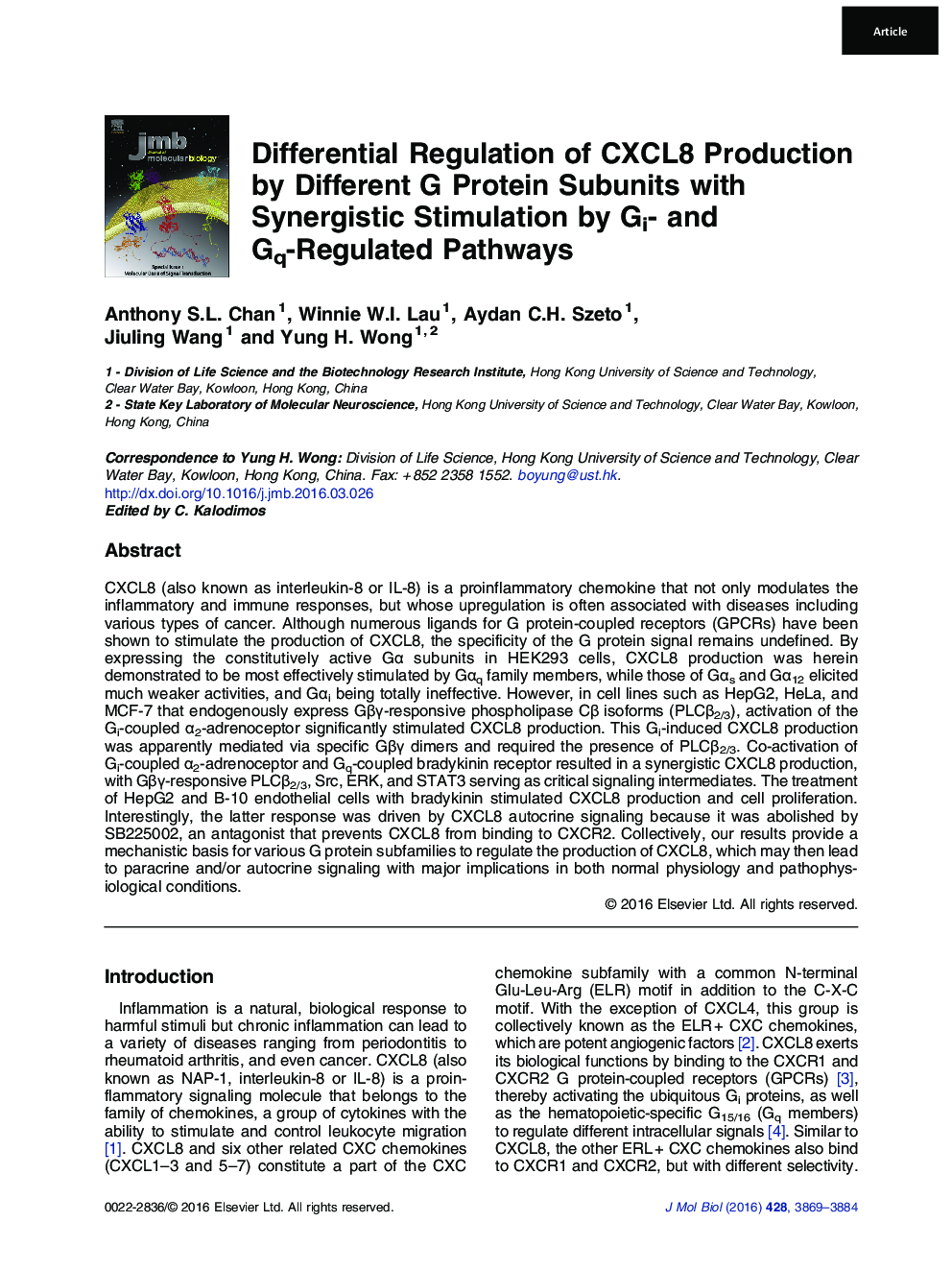| Article ID | Journal | Published Year | Pages | File Type |
|---|---|---|---|---|
| 5532913 | Journal of Molecular Biology | 2016 | 16 Pages |
â¢Activations of specific Gα subunits can elevate the productions of CXCL1, CXCL5 and CXCL8, but not CXCL6 and CXCL7.â¢Gαq triggers CXCL8 production effectively, while Gαs and Gα12 elicit weaker responses, and Gαi being totally ineffective.â¢However, in the presence of Gβγ-responsive PLCβ2/3, activations of Gi-coupled receptors can trigger CXCL8 production.â¢Co-activation of Gi and Gq results in a synergistic CXCL8 production that requires functional PLCβ2/3, Src, ERK and STAT3.â¢The induced CXCL8 can influence CXCR2-expressing host cells and neighbouring cells in an autocrine or paracrine fashion.
CXCL8 (also known as interleukin-8 or IL-8) is a proinflammatory chemokine that not only modulates the inflammatory and immune responses, but whose upregulation is often associated with diseases including various types of cancer. Although numerous ligands for G protein-coupled receptors (GPCRs) have been shown to stimulate the production of CXCL8, the specificity of the G protein signal remains undefined. By expressing the constitutively active Gα subunits in HEK293 cells, CXCL8 production was herein demonstrated to be most effectively stimulated by Gαq family members, while those of Gαs and Gα12 elicited much weaker activities, and Gαi being totally ineffective. However, in cell lines such as HepG2, HeLa, and MCF-7 that endogenously express Gβγ-responsive phospholipase Cβ isoforms (PLCβ2/3), activation of the Gi-coupled α2-adrenoceptor significantly stimulated CXCL8 production. This Gi-induced CXCL8 production was apparently mediated via specific Gβγ dimers and required the presence of PLCβ2/3. Co-activation of Gi-coupled α2-adrenoceptor and Gq-coupled bradykinin receptor resulted in a synergistic CXCL8 production, with Gβγ-responsive PLCβ2/3, Src, ERK, and STAT3 serving as critical signaling intermediates. The treatment of HepG2 and B-10 endothelial cells with bradykinin stimulated CXCL8 production and cell proliferation. Interestingly, the latter response was driven by CXCL8 autocrine signaling because it was abolished by SB225002, an antagonist that prevents CXCL8 from binding to CXCR2. Collectively, our results provide a mechanistic basis for various G protein subfamilies to regulate the production of CXCL8, which may then lead to paracrine and/or autocrine signaling with major implications in both normal physiology and pathophysiological conditions.
Graphical AbstractDownload high-res image (181KB)Download full-size image
